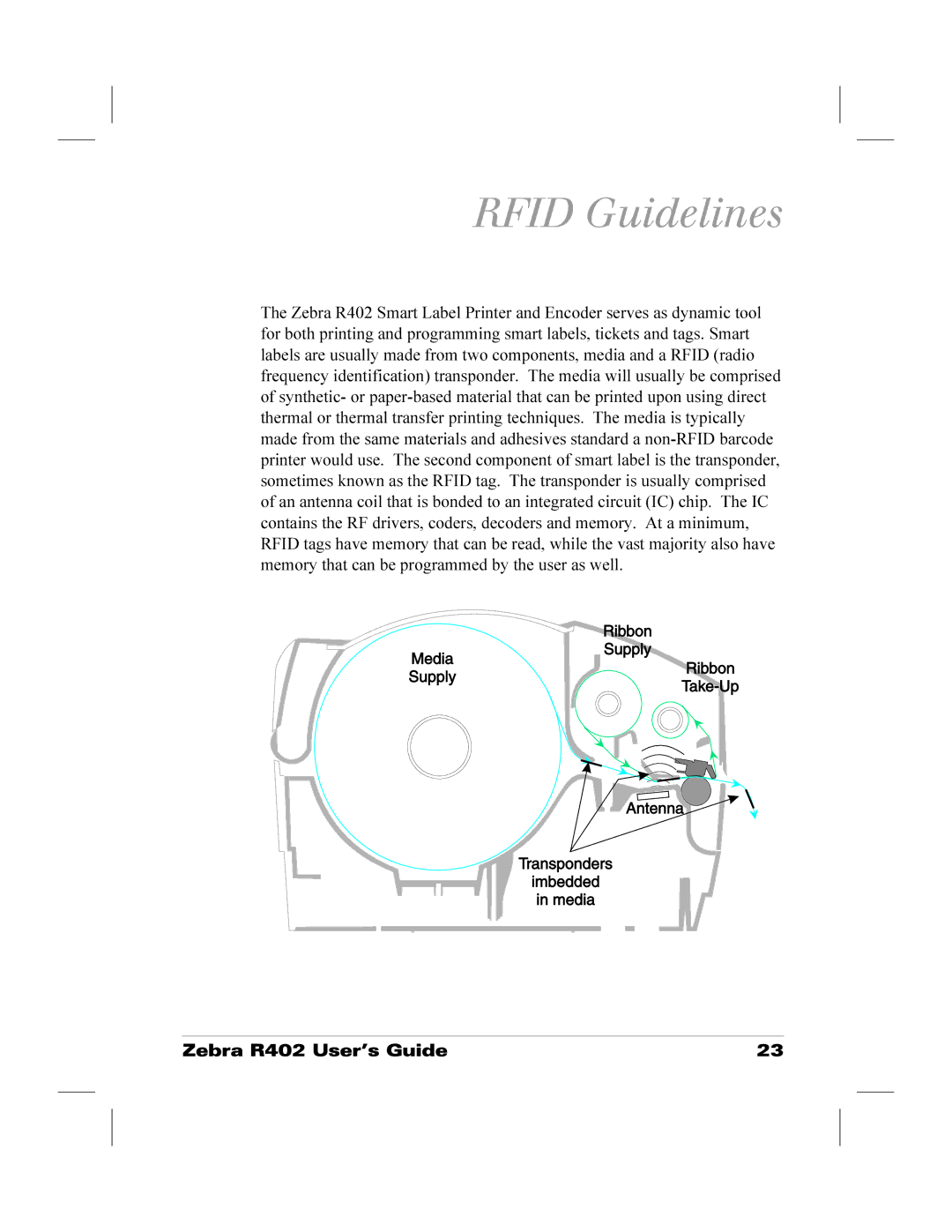RFID Guidelines
The Zebra R402 Smart Label Printer and Encoder serves as dynamic tool for both printing and programming smart labels, tickets and tags. Smart labels are usually made from two components, media and a RFID (radio frequency identification) transponder. The media will usually be comprised of synthetic- or paper-based material that can be printed upon using direct thermal or thermal transfer printing techniques. The media is typically made from the same materials and adhesives standard a non-RFID barcode printer would use. The second component of smart label is the transponder, sometimes known as the RFID tag. The transponder is usually comprised of an antenna coil that is bonded to an integrated circuit (IC) chip. The IC contains the RF drivers, coders, decoders and memory. At a minimum, RFID tags have memory that can be read, while the vast majority also have memory that can be programmed by the user as well.

